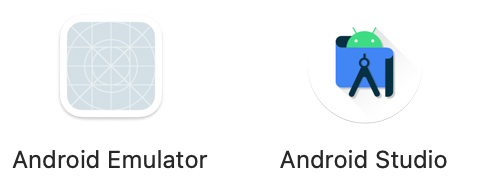- In this video I'm setting up an Android development environment on the new Apple M1 MacBook Air with 16GB of RAM. VIDEO Apple M1 and Android Emulato.
- Whether it is LG, Samsung, or Huawei, 90% of the mobile phones function on Android. Considering such tremendous growth in the mobile app development.
When Apple announced the new MacBook Air, MacBook Pro and Mac mini powered by the Apple M1 processor, there was a lot of tempered excitement.
Setting up the environment
Setup for iOS needs:
- Node (with NVM)
- Watchman
brew install watchman - Xcode (install from the App Store)
- Xcode Command Line Tools
xcode-select --install - Accept the Software License for Xcode
sudo xcodebuild -license. It'll prompt you anyway when you run Xcode for the first time. - CocoaPods
sudo gem install cocoapods
Homebrew
Install Homebrew if you don't have it installed already
Node LTS with NVM
iOS
- Open Terminal / iTerm with Rosetta (Get Info > Open using Rosetta)
- Prefix the CocoaPods related commands with
arch -x86_64
Android
- Install JDK 8
brew install --cask adoptopenjdk/openjdk/adoptopenjdk8 - Install Android Studio
- Install Android Emulator for M1
The Android Emulator doesn't work out of the box yet. Luckily, there is a Preview build by Google that supports Apple Silicon M1 chip based MacBooks. You'll have to download and install it separately. Most things work.
Troubleshooting
command not foundforbrewornvm. Make sure you have a~/.zshrcfile. On a fresh new M1 MacBook, there is no~/.zshrcor~/.zprofilecreated and the$PATHdoesn't get updated because of it. Create a~/.zshrcfile and run the commands to install Homebrew and NVM again.

Add this to you Podfile
Two options:
- Run on a different port
react-native start --port=8088 - OR find out what program is using 8081
sudo lsof -i :8081and kill itkill -9 1234
incorrect architecture 'x86_64' errors
add this to the Podfile
run pod install afterwards
Android Emulator For M1 Macbook Mini
Links
I recently downloaded the Android Emulator that could run natively on an M1 Silicon Mac computer, when I installed the DMG file and ran it for the first time, I got the below error,
Android Emulator For M1 Macbook
I downloaded the dmg file from a know Github repo - Well this is common behavior on Apple macOS, where when you download an application setup from the internet, it blocks it for security reasons. now, how can I get pass through this warning and run the emulator!
Steps to fix this warning:- Click on Cancel on the message,
- Now go to Apple Menu: System Preferences...
- Click on Security & Privacy,
- Go to Genrals Tab,
- Here you should see 'Allow apps downloaded from: 'Android Emulator' was blocked from use. because it is not from an identified developer.
- Click on the lock to Autenticate and make changes:
- Click on open Anyways
- You will again see a warning: Just click on Open button
You would see that the emulator window opens up, you will see a message to how to connect this emulator with Android Studio,
Could not automatically detect an ADB binary. Some emulator functionality will not work until a custom path to ADB is added. This can be done in Extended Controls (...) > Settings > General tab > 'Use detected ADB location'

Have Questions? Post them here!
Please enable JavaScript to view the comments powered by Disqus.
- osascript wants to make changes while Android Studio Installation on Mac OS X - Mac-OS-X
- How to check RAM details on Mac? - MacOS
- Convert Java Array to ArrayList Code Example - Java
- Fix SharePoint PowerShell error - The term Get-SPweb is not recognized as the name of a cmdlet function script file or operable program - SharePoint
- say command macOS terminal examples - MacOS